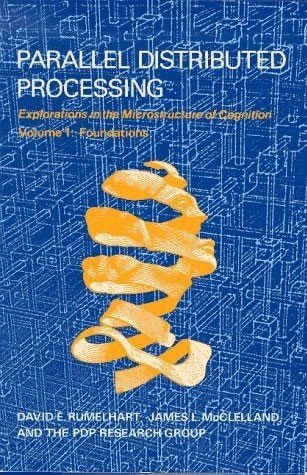
Working out what remuneration someone is worth is of enormous interest to both employers and their people alike. But what are the key ways to determine the appropriate compensation for the contribution of current and potential future contributors to an enterprise. I thought I’d jot down some of the main approaches to work out that elusive number:
- Market value approach: what do persons who do that type of role generally receive for performing that kind of work or what does the market think that person is worth. Essentially what is the market rate for that type of work or for the individual in question. This is a common approach for commodified positions in the private sector and for individuals who are well-known in their industry.
- The marginal utility approach: if the person is undertaking their role to the standard expected, what extra revenue/profit/gross margin will the enterprise achieve over and above what the enterprise will achieve if the person was not undertaking their role. This value can change over time based on variations in market conditions and on the performance of other roles in the enterprise. An example may be the remuneration of a football player. If the football player is so good that the club is much more likely to win a football game and attract more fans to watch the game, then they are worth a significant amount based on marginal utility.
- Equal share approach: if the surplus value being created by the enterprise is shared equitably around the firm amongst the people responsible for achieving that surplus value, then this is a fair compensation for that contribution. So if the value add is $1M per annum over and above other input costs (including return on equity), and 10 staff helped achieve that value add, then everyone should receive $100K. This is more often used for bonus calculations, but is nonetheless, part of an individual’s remuneration.
- Company value delta: what is the increased value of the enterprise in the market if the individual is in the role as opposed to if the individual is not in the role. Some CEOs are valued based on this concept, where the value of the company is increased because the market believes this CEO will improve the performance of the company or bring a loyal book of established clients. Therefore the CEO is worth a proportion of the net asset value delta of the company with him/her vs the value without him/her.
- Compensation for investment approach: how much would a person have to have invested in their education/certifications/experience to have been capable of undertaking the role and what is a fair compensation for that. For instance, some medical specialities require over 10 years of tertiary studies to achieve a level of education and expertise to be able to function autonomously. This level of investment leaves less career lifetime to earn and therefore requires higher compensation to make up for the level of prior investment made by the position holder/candidate.
- Optimise churn approach: what level of compensation is sufficient to deter an incumbent from choosing to go elsewhere. This can even be below market rate, as there is a cost to change employers that incumbent staff may factor into their decision to quit to start with a new employer who may be paying the higher market rate.
- Attract the best approach: what remuneration is likely to attract, retain and motivate the best people who are more likely to contribute more to the enterprise’s success. This may be a “set the tone” approach which says that a high performing culture is the expectation and that the enterprise attracts and retains the best, and appreciates the added value the best bring to the enterprise.
- Lifetime value approach: as opposed to viewing a person in their current role or the value they are currently contributing, this approach looks at the value add of a person over the lifetime of their tenure with the enterprise. This looks at the person’s potential to add value both now and into the future. This approach decides what is the right remuneration to remit as a function of their expected lifetime value to the enterprise. Some individuals who are being groomed for future leadership positions may receive more remuneration than their current role or value might justify.
- Seniority approach: the key here is the current size of the budget, the current delegated authority, the current number of staff and the general seniority of the position held. This is common in the public service where marginal utility or market rates can’t be determined easily.
- Length of Experience approach: the key here is how long the person has held the position or has worked in the enterprise. The theory is that more experienced incumbents are more likely to contribute more than the less experienced. Once again this is common in the public service.
- Industrial Award approach: based on the pre-negotiated industrial award, pay what is specified in the award for an incumbent in a particular position. Depending on the power-relationship between the negotiating parties, award rates may be a little above market rates. Essentially a union is likely to try and capture more of the enterprise’s surplus for the workers out of the owner’s capital return. Unions do have a vested interest in maintaining the continued operation of major employers.
- Incentive approach: what level and structure of compensation will incentivise the person to perform at a high level adding further value to the company than an unmotivated incumbent, whilst encouraging them to stay with the company to continue contributing.
- The perceived-by-peers fairness approach: what would the majority of the person’s work colleagues believe is fair compensation for the work they do, the effort they put in, the sacrifices they make and the contribution they make to the success of the enterprise
- The perceived-by-incumbent fairness approach: what would the person themselves feel is a reasonable compensation for the work they do, the effort they put in, the sacrifices they make and the contribution they make to the success of the enterprise. This can be impacted by the incumbent’s knowledge of the remuneration of others.
- Past achievement approach: how much better did the organisation do last year/period as a result of the contribution made by the incumbent. Once again some CEO’s claim responsibility for the increased revenue/profit/gross margin from the previous year/period and claim that they are worth a proportion of that increase.
- Compensate for opportunity cost: how much could the person have earned if they were investing their time, expertise and effort elsewhere? This is commonly used by headhunters where they offer a potential recruit at least a bit more than their current remuneration to attract them to give up their current role.
- Minimum allowable approach: some enterprises will try to minimise remuneration to the lowest allowable by law. This is common when the labour market is a buyers market, with plenty of alternate labour available to replace the leaving of any incumbents and when the expertise and skill required to undertake the role is very low.
- Hardship compensation approach: How much hardship, danger or sacrifice is required to undertake the role and what is a fair compensation for the sacrifices required to undertake the role. The role may be based in a remote location, or require unusual hours of attendance, or be particularly physically demanding or emotionally traumatising (e.g. mercenary work).
- Key contribution approach: a person may have an idea or piece of intellectual property upon which the unique differentiation of the business model relies. This person could have taken their IP to elsewhere but chose to contribute that unique differentiator to the enterprise. In recognition of that unique and key contribution and the importance of it to the overall value or competitiveness of the enterprise, perhaps compensatory remuneration is justified.
In some circumstances, some of the above approaches amount to the same thing, and often the final number does include consideration of multiple of the above approaches. How many of the above considerations does your enterprise use when determining compensation for current and potential contributors? Are there others not included on this list?
https://www.linkedin.com/pulse/what-someone-worth-your-enterprise-jeffrey-popova-clark/













